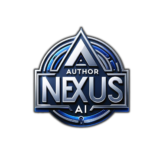Diving into the world of publishing, you’ll quickly find that crafting an engaging book description is an art that’s constantly evolving. In “How Can You Adapt Book Descriptions to Emerging Trends for Maximum Reader Engagement?”, you’ll discover how to keep your descriptions fresh and compelling in a dynamic market. This guide will walk you through current trends and effective strategies that capture readers’ attention, ensuring your book doesn’t just get noticed but truly stands out in a crowded landscape. Have you ever wondered how you can make your book descriptions stand out in today’s fast-changing market? With so many new books being published daily, capturing reader interest is more crucial—and challenging—than ever. But don’t worry, you’re in the right place! This guide will show you how to adapt your book descriptions to emerging trends for maximum reader engagement.
Understanding Emerging Trends in Book Descriptions
First things first: what does “emerging trends” mean in the context of book descriptions? Simply put, it’s about understanding the current reader preferences, technological advancements, and marketing tactics that are gaining popularity. Keeping up with these trends can elevate your book descriptions and, by extension, your book’s success.
Insight into Reader Preferences
Readers today are different from even just a few years ago. They are more digitally savvy, discerning, and demanding. Here’s what modern readers often look for:
- Relatable Characters: Readers want characters they can see themselves in or aspire to be.
- Snappy Openers: The first sentence or two should grab attention immediately.
- Clear Genre Indicators: Let readers know right away if this book fits their favored genre.
- Emotional Hooks: Describe what emotions readers can expect to experience.
Technological Advancements
Technology is increasingly shaping how we market books. Here are some key areas:
- AI and Automation: Tools to analyze what works in book descriptions and automate parts of the process.
- Enhanced Metadata: Tags and metadata that aid discoverability on platforms like Amazon.
- Visual Aids: Including images and videos to captivate potential readers’ attention.
Crafting Engaging Book Descriptions
Now that you know why understanding trends is important, let’s dive into how you can leverage this knowledge to craft engaging book descriptions.
The Snappy Opener
Your first sentence is your first impression. You need to hit hard and fast. Consider these opening strategies:
- Intriguing Questions: “What if you discovered you had superpowers?”
- Bold Statements: “This is not your average love story.”
- Unique Character Introductions: “Meet Emily, a librarian by day and a ninja by night.”
Clear Genre Indicators
Be upfront about your book’s genre. Use familiar phrases and tropes that your target audience will recognize and appreciate:
- Romance: “A heartwarming tale of love and redemption.”
- Thriller: “A mind-bending thriller that will keep you up all night.”
- Fantasy: “An epic journey in a land where magic rules.”
Emotional Hooks
Tugging at the reader’s emotions can be a powerful tactic:
- Joy: “Experience the warmth of falling in love for the first time.”
- Tension: “Can they solve the mystery before time runs out?”
- Fear: “A chilling encounter that will leave you breathless.”
Enhanced Metadata
Metadata might seem like a behind-the-scenes aspect, but it’s crucial. Here’s how you can enhance it:
Keywords
Use relevant keywords that readers are likely to search for. Don’t just think about single words; consider phrases too:
| Type | Example Keywords |
|---|---|
| Single Words | Thriller, Romance, Fantasy |
| Phrases | Mystery book series, Love stories, Magic tales |
Categories
Choose the most appropriate categories for your book, and if necessary, subcategories:
- Primary Category: Fiction, Non-Fiction, etc.
- Subcategory: Mystery, Romance, Science Fiction, etc.
Tags
Tags work similarly to hashtags on social media—use them wisely to enhance discoverability:
- Example Tags: “romantic suspense,” “historical thriller,” “urban fantasy.”
Utilizing Technology
Don’t shy away from technological advancements that can assist in refining your book descriptions.
AI and Automation Tools
Several AI tools can help analyze successful book descriptions and suggest improvements:
- Grammarly: Beyond grammar, it assists in making your text more engaging.
- Hemingway Editor: It helps in making your writing clear and impactful.
- AI Content Generators: Tools like Copy.ai or Jasper can help brainstorm ideas and drafts.
Visual Aids
Adding visual aids can make your description pop off the screen. Consider:
- Book Trailers: Short videos summarizing the book’s premise.
- Character Illustrations: Visuals of main characters or settings.
- Infographics: Infographics summarizing the plot or key aspects of the book.
Formats and Platforms
The way you write your book description might change depending on the platform and format.
Ebook Descriptions
For eBooks, descriptions are often shorter and need to be optimized for SEO:
- Keyword Rich: Make sure to use keywords naturally within the text.
- Clickable Links: Use links to other books or series within the same genre.
Print Book Descriptions
Print descriptions usually are featured on the back cover and can be slightly longer:
- More Luxurious Language: In the print world, you can afford to be a little more descriptive and lush.
- Author Bio: Often included because there’s more space available.
Audiobook Descriptions
With the rise in audiobook popularity, writing descriptions for them is another niche to master:
- Focused on Voice Talent: Mention who is narrating the book—this can be a big selling point.
- Conciseness: People often choose audiobooks based on quick, captivating descriptions.
Regular Updates and Testing
Finally, the key to adapting to emerging trends is continuous improvement. Don’t let your book description become stale.
A/B Testing
A/B testing involves comparing two versions of a description to see which performs better:
| Aspect | Version A | Version B |
|---|---|---|
| Opening Line | “Meet Emma, who’s about to discover…” | “What if everything you knew was a lie?” |
| Length | 150 Words | 200 Words |
Reader Feedback
Listen to your readers. Ask them what they liked or didn’t like about your book description:
- Surveys: Send short surveys to your email subscribers.
- Comment Sections: Engage in comment sections on book-related blogs and social media.
Analytics
Use analytics tools to measure how your description is performing:
- Click-Through Rates: How many people clicked to buy after reading the description.
- Conversion Rates: How many actually completed the purchase.
- Bounce Rates: How many exited the page without interacting further.
Conclusion
Crafting engaging book descriptions that align with emerging trends doesn’t have to be daunting. By understanding your readers, leveraging technology, and continually refining your approach, you can boost reader engagement and maximize your book’s success. Now it’s time for you to put these practices into action and watch your readership grow!
So, are you ready to transform your book descriptions? The next bestseller could be just a few captivating words away. Happy writing!



